A black blouse was a poor choice, even though the walk up Addison’s driveway—the one which leads to the only Michelin-starred restaurant in San Diego—is quick. A faint eucalyptus breeze offers little relief. The noon sun blisters down from a cloudless sky. This is winter in Southern California.
Winter. “What is that?” William Bradley, Executive Chef of Addison, asks jokingly. We’re sitting in Addison’s regal parlor next to its bar. The ornate terrace doors are pushed open wide. “My wife is Canadian,” he goes on. “That’s a real winter where it snows, it’s cold, and you want to stay inside and have things that are very comforting.” Addison suggests despite the actual temperature, there’s an acclimation that encourages those same cravings. “Forty degrees to us is freezing.”

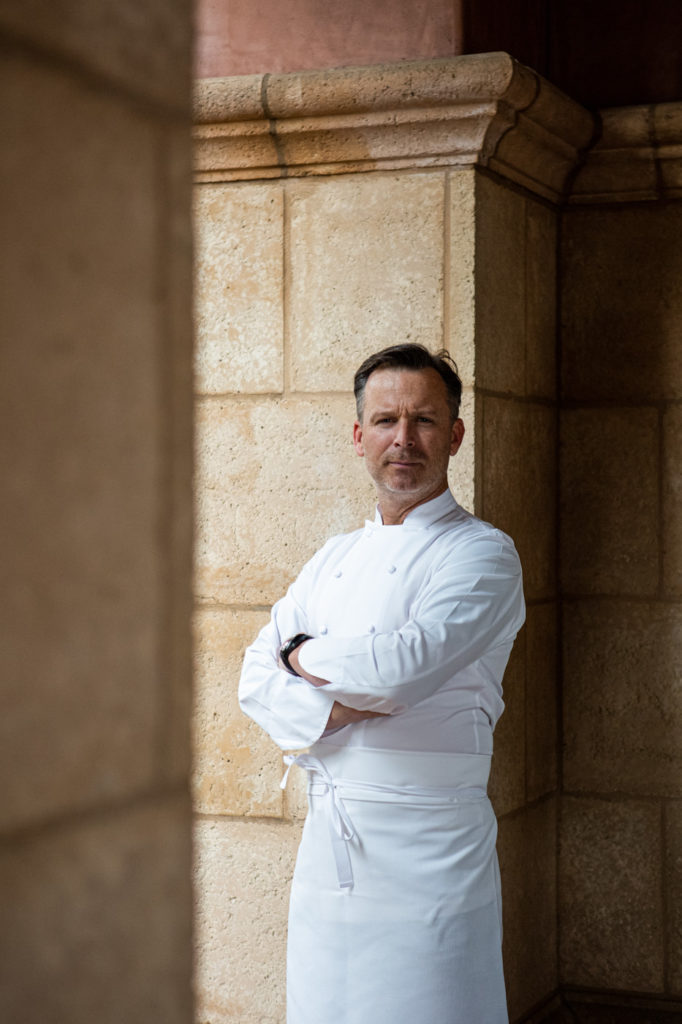
It’s not the first time this idea of seasonal recalibration—are the seasons wrong or just our preconceived notions of them?—has come up during my visit. In the U.S., California is stereotypically viewed as the starkest contrast to frosty months of polar vortex and grey slush that hit cooler weather regions. Here, we have cactus Christmas trees and Surfing Santa. How does that paradox lend itself to food?
California progresses through the months of December, January and February too. Its adaptations might appear to be more nuanced than elsewhere, but that doesn’t diminish the need to be vigilant. Over one third of the nation’s vegetables, and two-thirds of its fruits and nuts, are produced by this single state.

While the weather is consistent, it actually presents a culinary challenge. “In wintertime, we really have to shift our techniques and our approach to the materials to continue to hold a standard to what we do,” Bradley explains.
And yet, there’s no denying it: Californians are spoiled. Year-round growing translates to an expectation of quality; when ingredients are grown a town away instead of several states, that freshness is noted on the plate. As a result, Californian cuisine can get away with—or, depending on how you look at it, shoulders the bigger responsibility of—making the simple spectacular.
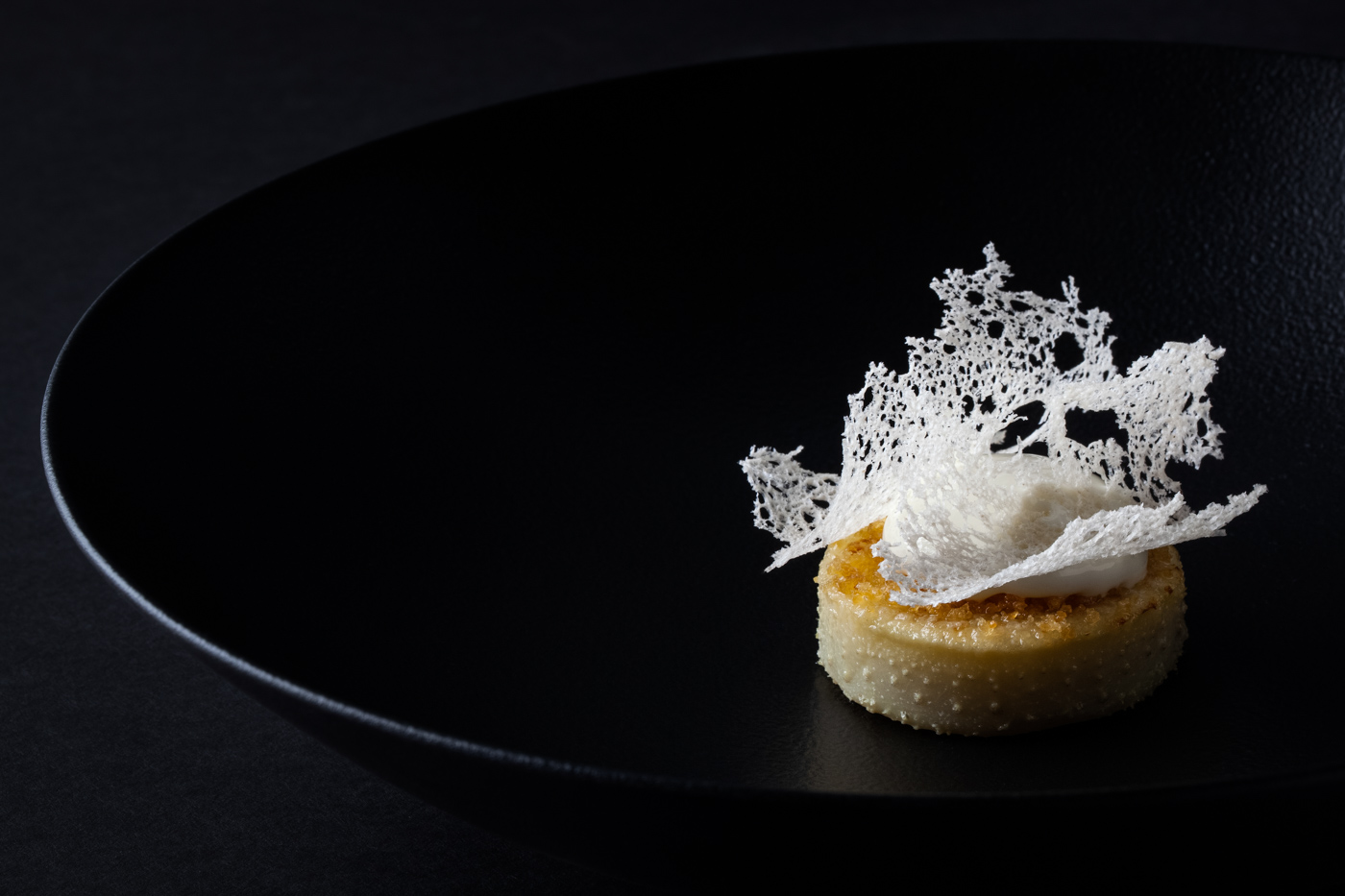
A symbiotic relationship makes this kind of simple successful. Sourcing has always been paramount for chefs like Bradley. As a fine-dining establishment specializing in contemporary French cuisine, part of Addison’s magic lies in creating a singular experience. The other half is, of course, the farms.
Although Addison works with several farms, in this case he’s primarily speaking of Spencer Rudolph, who, along with his dad Rocky, owns Sage Hill Ranch Gardens. The day before our meeting at Addison, I accompany Bradley, along with Chef de Cuisine Stefani de Palma and Sous Chef Jonathan Brambila, out to the farm. It’s a chance to see, in real-time, why this relationship matters.
“It’s become very fashionable now; it makes people more aware and wanting to do this,” Bradley says, speaking of the hyper-traceability of products, especially as it pertains to food. He believes it comes down to smaller farms, fishers and foragers. “It’s nice to have found someone that’s local and passionate about it.”
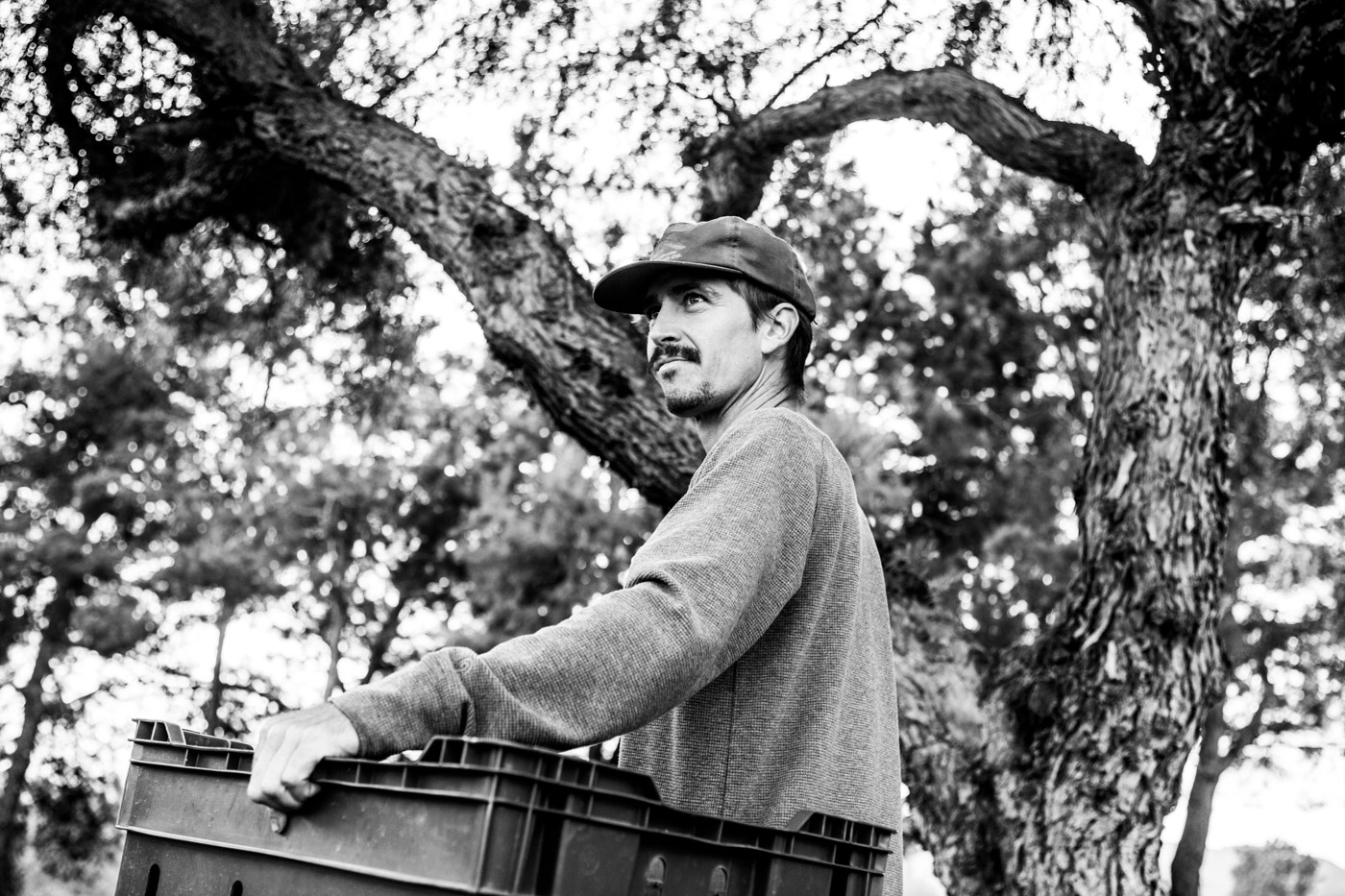
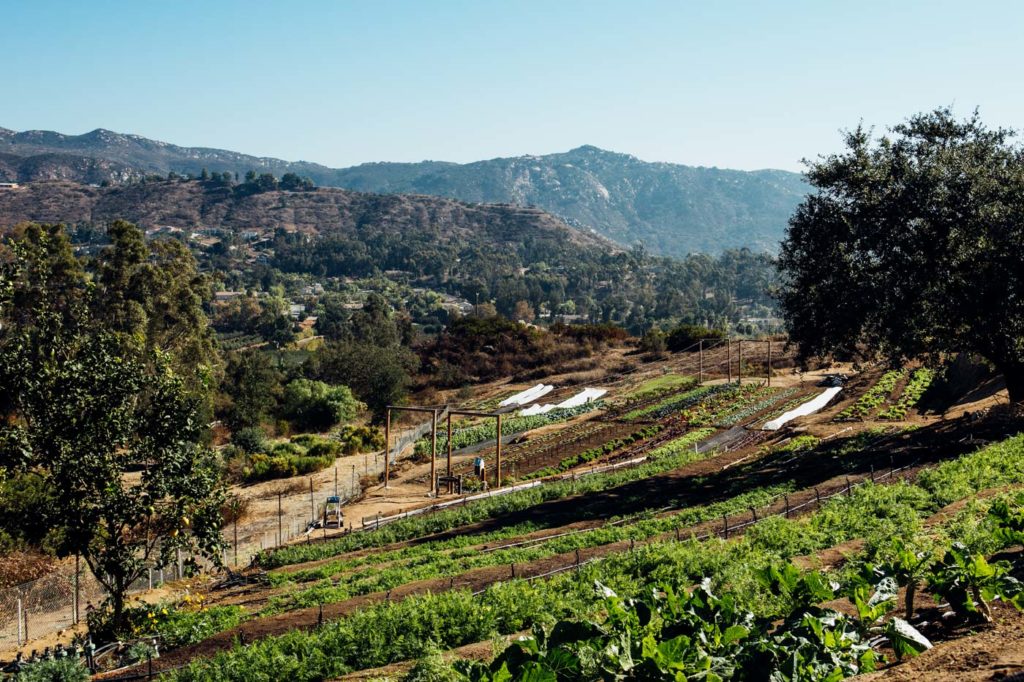
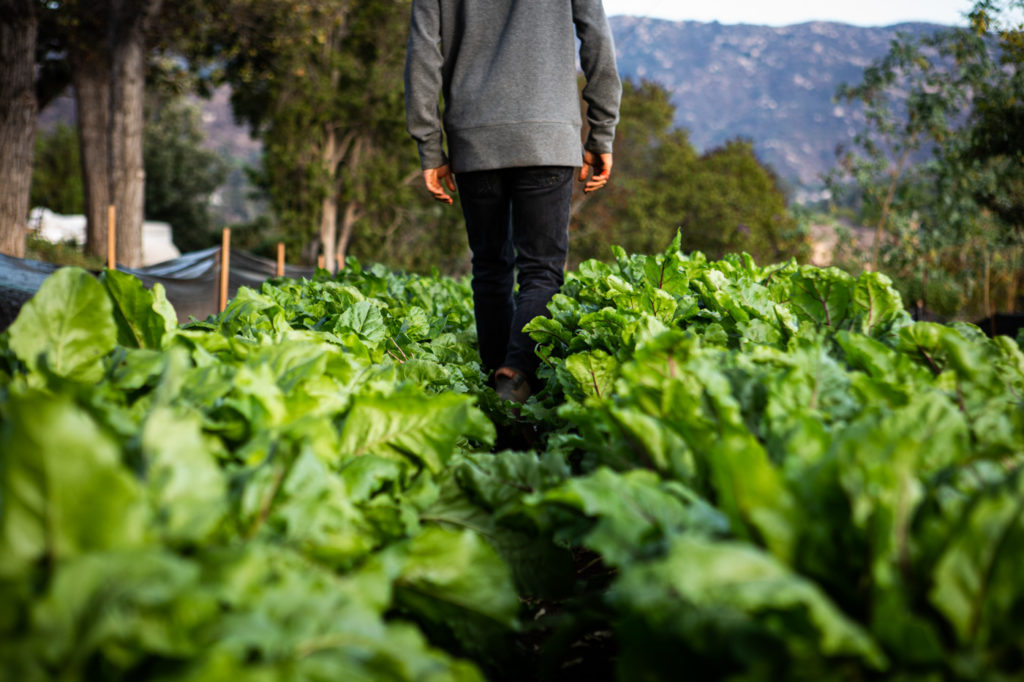
Located in Escondido, North County San Diego, Sage Hill is a three-acre property with a quarter of an acre in production. Visiting in November, green rows of root crops, kale, cabbage, broccoli and lettuces fan out in different directions. Aside from two of the largest terraces, which were placed with a bulldozer, everything was carved out by hand.
Soil care is extremely important at Sage Hill. As Spencer explains, the goal is to always keep the future in mind. “We’re trying to replicate what you see in nature,” he says. “When you look out into the hills, you don’t see soil. We grow at such a density that [the crop] creates a canopy and protects the soil.” He says that everything comes down to protecting the soil, to “making sure there’s longevity.”
In addition to hand-transplanting every seeded plant into the ground, Sage Hill also refrains from using sprays or pesticides, even certified organic ones. Instead, they use preventative methods such as bug netting or introducing natural predators like cats into the farm to hunt pests. Mirroring nature in this way means that Bradley, and therefore Addison, have a direct pipeline from earth to menu.
Walking between vegetable beds, Spencer stops to let Bradley sample a yellow arugula flower, something that recently bloomed. Delighting in the flavor, Bradley uses that as a further example of how the chef-farmer dynamic should work. “A chef knows when to execute something to maximize its deliciousness,” he explains. But that also requires the farmer know when to pull a crop, or when to leave it a little longer on the vine. “The only way he’ll be able to do that is like this,” Bradley motions to Spencer. “[With a large farm] you don’t know how long it’s been sitting in a refrigerator in a warehouse. It affects the sugar content, quality and flavor.”

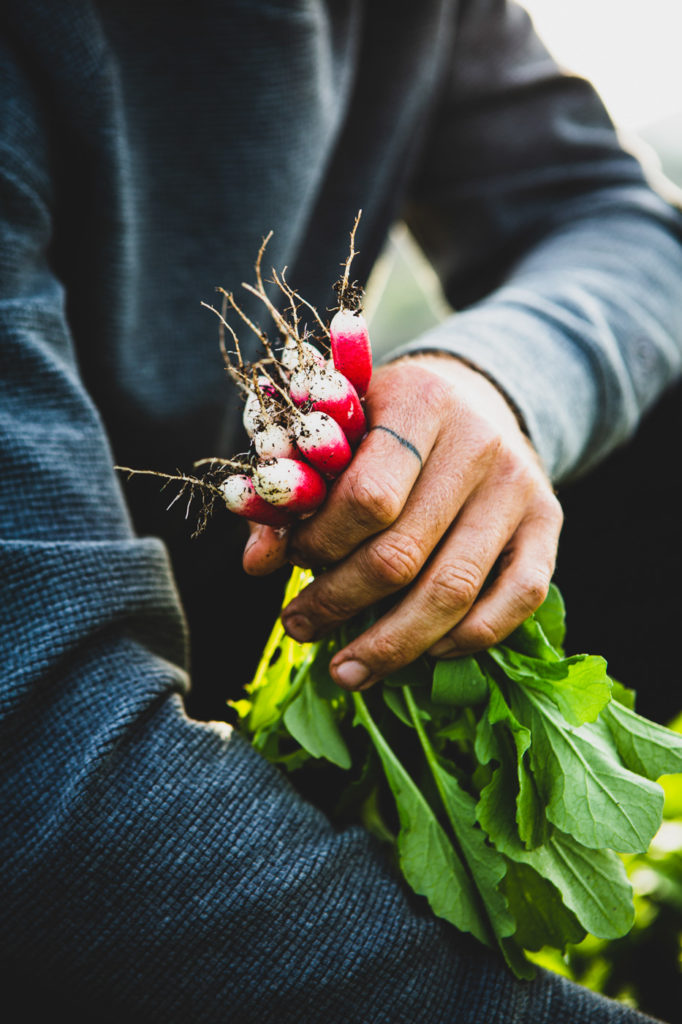

Another example is the young ginger that Spencer has been experimenting with growing. After sharing the product with Bradley, the chef was inspired to develop a dessert that would highlight the ingredient. The result, candied with rice wine vinegar, became the perfect complement to yuzu sorbet and black sesame.
The chef and team at Addison rely heavily on these ingredients and their flavor. That means how and where growing occurs—and most importantly, the ways in which the weather intervenes—is a constant topic of concern. Unexpected climate changes can wipe out entire yields due to wildfires or an early frost. California is the most susceptible state in the US to wildfires, where after long, dry, hot summers, vegetation proves ready tinder come fall. Fires are fueled by strong annual winds and often sparked by man-made elements such as downed power lines, camp fires or cigarettes. In 2018, over 1.8 million acres of land were lost in California as a result of 8,054 wildfires.

“The first thing I asked when I [visited Sage Hill for the first time] is where is the fire line?” Bradley says, mentioning his father was a fire chief before he retired. “It’s unfortunate, but it’s something we have to deal with.”
Spencer elaborates, commenting that despite only being in business since 2017, he’s noticed summers becoming more intense in that short period of time. “This year we experienced a temperature swing where it was seventy [degrees] in summer, and the next day it got up to 114,” he remembers. “I saw cherry tomatoes melt on my vine. I’ve never seen that before.”

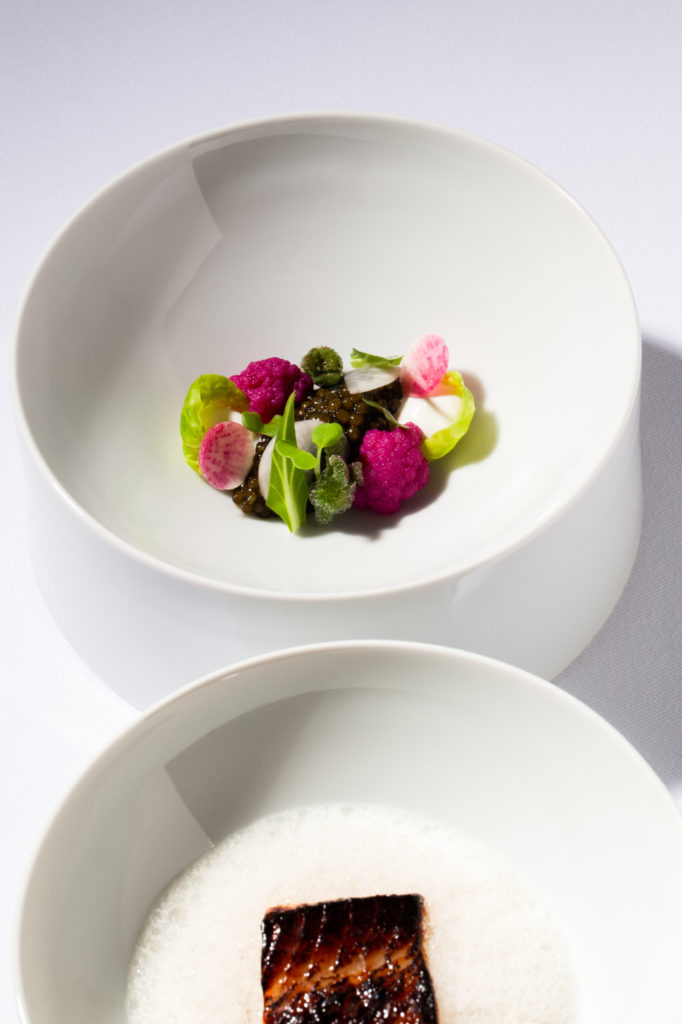


And when the heat pushes into the winter months, a different story develops. One where the calendar might signify one thing, but in California, Mother Nature plays to her own tune. Addison Chef de Cuisine Stefani de Palma notes the challenges of incongruity at the table: “It’s November and it’s eighty degrees. It’s really hard for us to feel like we want to serve something warm and pumpkiny when it’s hot out. You can still get beautiful watermelon [right now], but you can’t serve watermelon in November.” Bradley explains the best time to plan a menu is halfway through the season. At Addison, “winter” won’t truly begin until around Christmas.
The compromise? Well, at Addison there is no such thing. The same could be said for California, where despite what goes for the rest of the country, the spirit here is content to find its own way. Thankfully, produce agrees with that, enabling Bradley and his team to create such dishes as fruits de la terre with fennel, apple and fermented pear. Canapes featuring smoked salmon and ginger and petit choux hinting of aged sherry. Caramelized cod with cured miso and bonito butter, served alongside cruciferous vegetables, Kaluga Queen caviar, and creme fraiche. Artichoke au gratin, laced with whipped parmesan and bottarga di muggine.

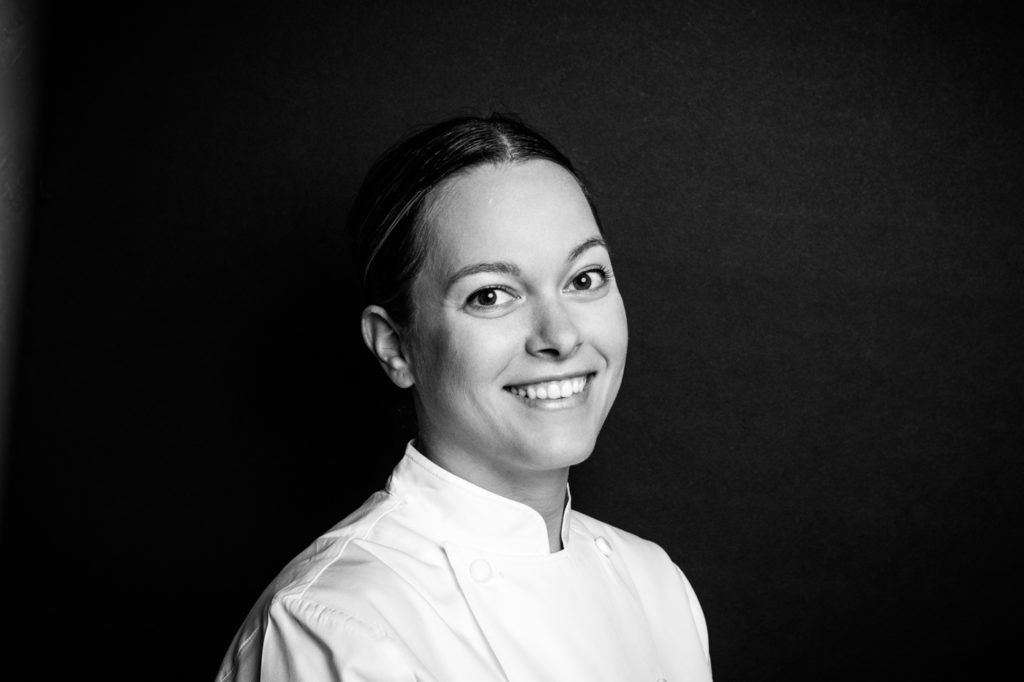




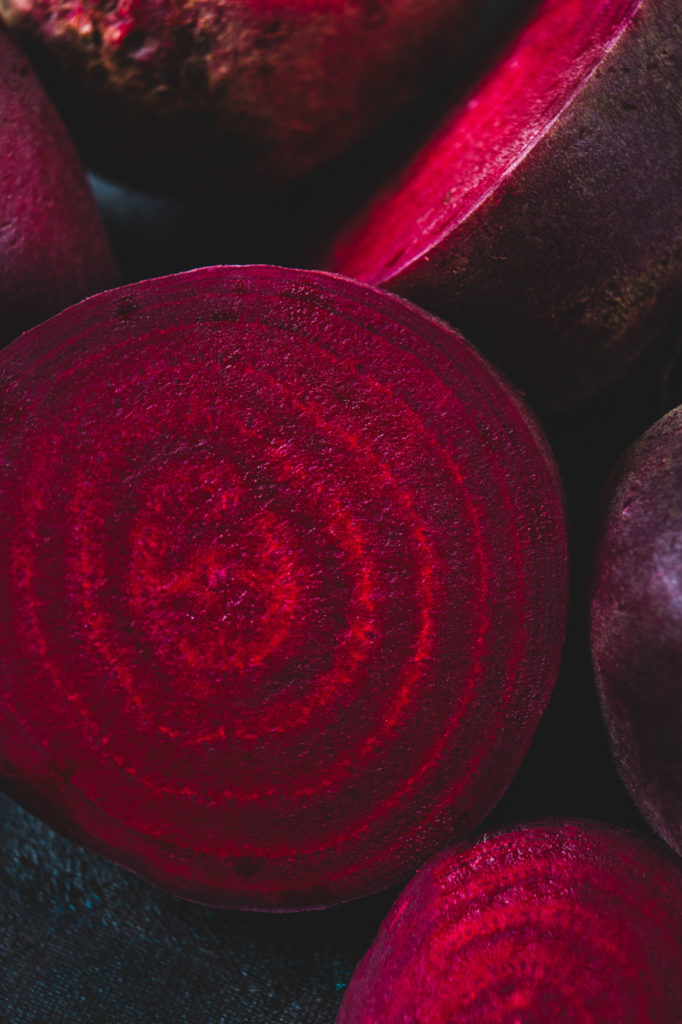

“Our goal is for someone to leave this restaurant, regardless of the season, knowing they just had an Addison experience,” Bradley remarks. “You’re in a very unique place. It is a destination. It has its own voice.”
This is winter in Southern California.

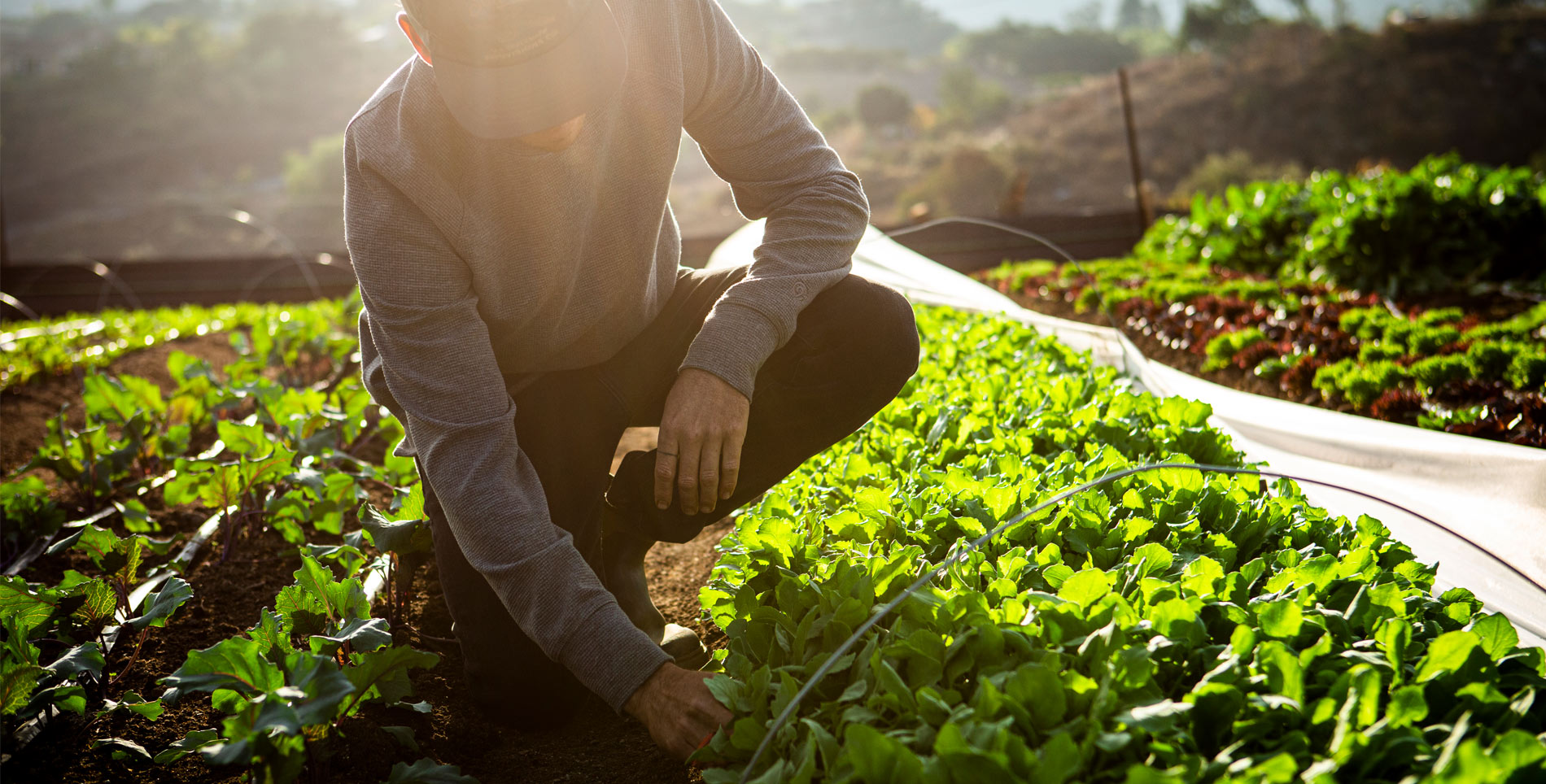

Our comments section is for members only.
Join today to gain exclusive access.